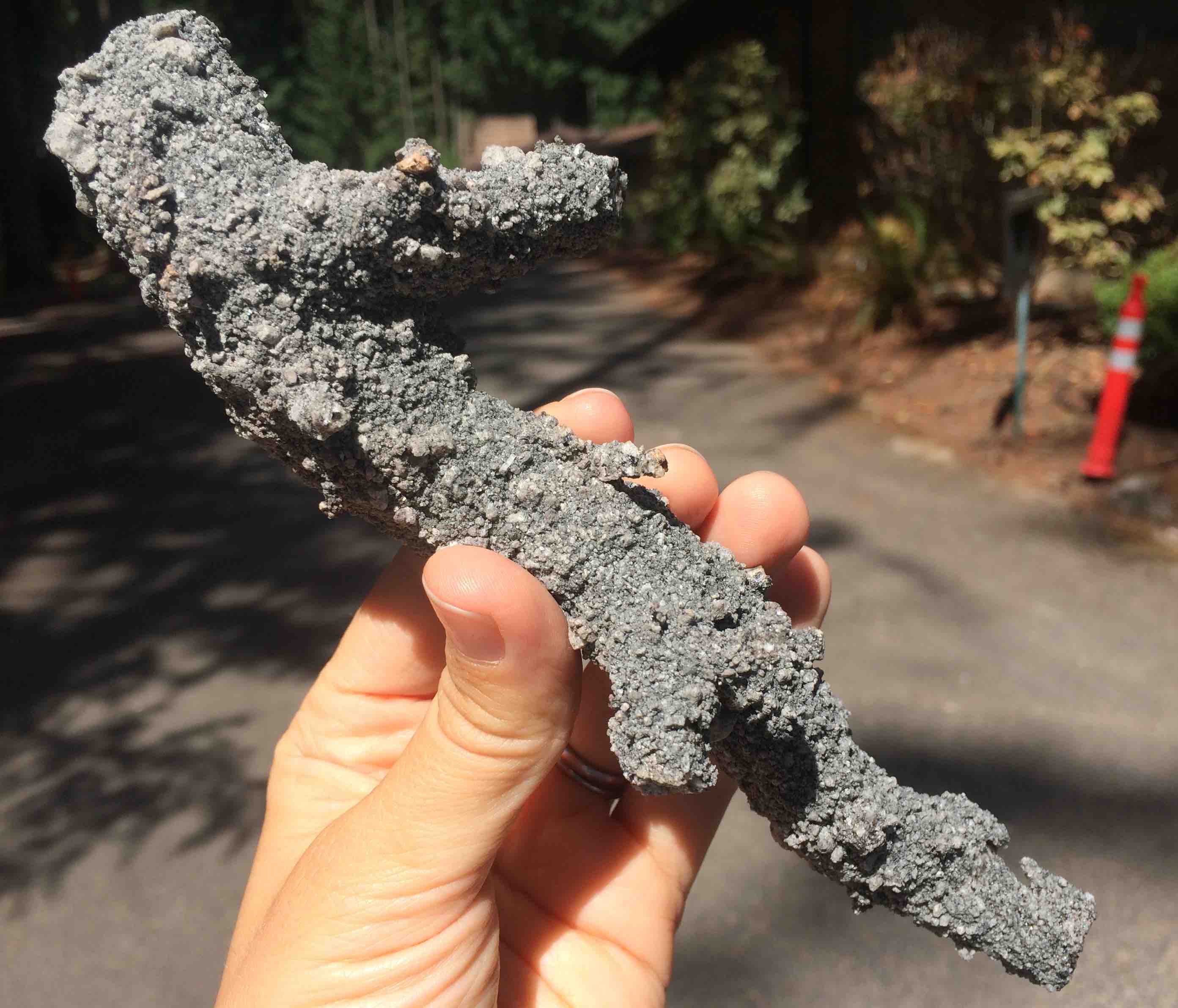You may have heard that lightning strikes can turn sand to glass from the 2002 film “Sweet Home Alabama.” As with most things Hollywood, the movie contains a little bit of both fact and fiction.
Lightning striking sand can indeed melt and fuse the sand into glass. The peak temperature of a lightning bolt can exceed 50,000 degrees F! Unlike in the movies, however, the glass is not clear, but rather black, gray, or green, and full of lots of bubbles. And because a lightning strike is so short, not all the particles have time to heat and melt. You can see them in this picture as white and gray nuggets trapped inside the green glass.
 This fulgurite shows a beautiful branching pattern that recalls the “shape” of the lightning strike. The outside is coated with sand grains that were loosely fused to the glassy interior, making it rather fragile and crumbly.
This fulgurite shows a beautiful branching pattern that recalls the “shape” of the lightning strike. The outside is coated with sand grains that were loosely fused to the glassy interior, making it rather fragile and crumbly.
People often confuse fossil worm burrows or man-made glass slag for fulgurites. If you think you’ve found a fulgurite, check to make sure it has a glassy interior, and look to see if sand particles are embedded throughout the specimen, and not just on one face or side.
This post is part of our What’s in the Box? series.

